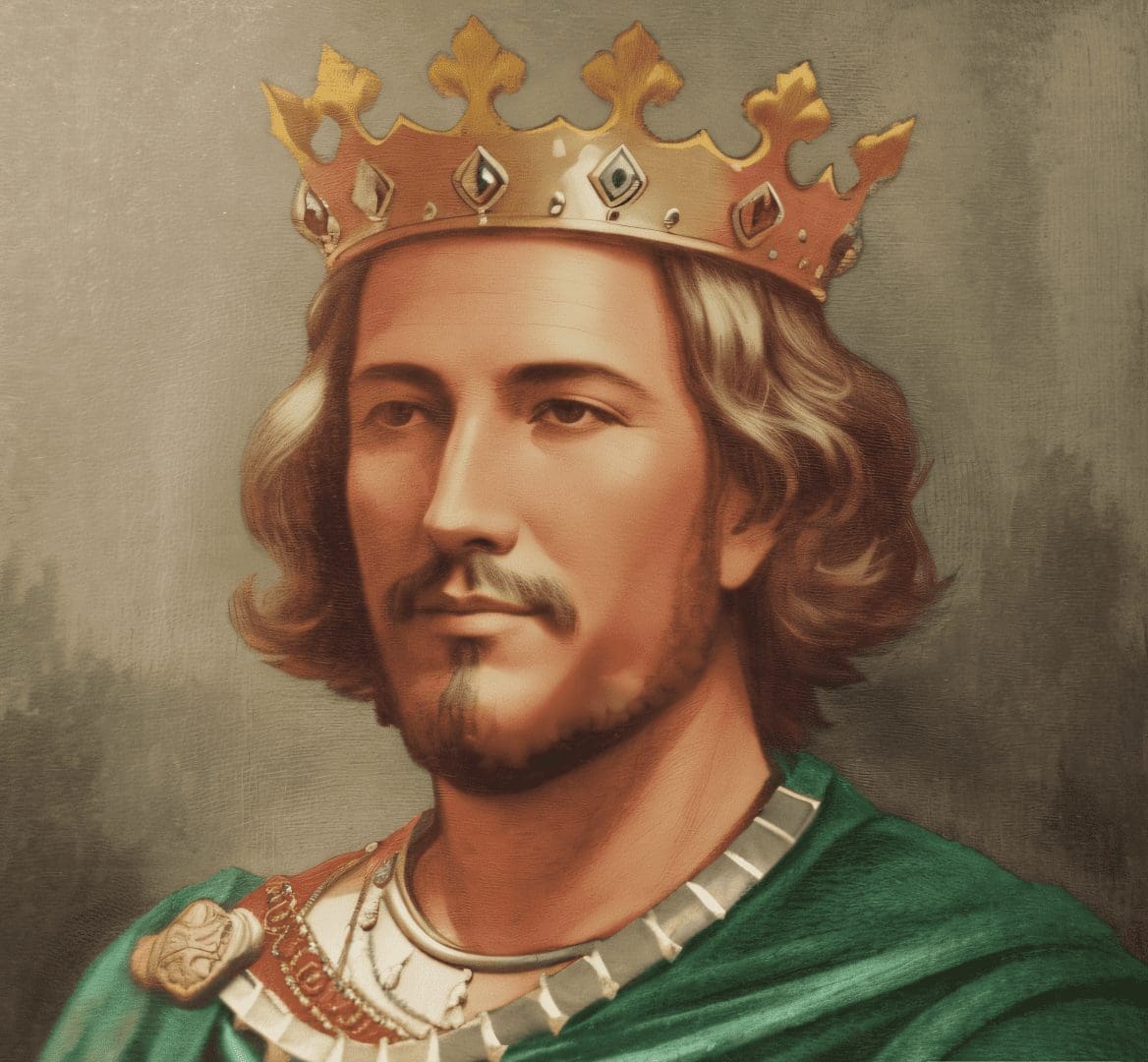Your basket is currently empty!

King Henry III
King Henry III of England, who reigned from 1216 to 1272, is a significant yet often overlooked monarch in English history. His reign, lasting 56 years, is one of the longest in medieval England. This article explores the life, reign, and legacy of King Henry III, providing a comprehensive understanding of his contributions and challenges.
Early Life and Ascension to the Throne
Henry III was born on October 1, 1207, in Winchester, Hampshire, to King John of England and Isabella of Angoulême. He was thrust into kingship at a tender age following his father’s death in 1216, amidst the turmoil of the First Barons’ War. At just nine years old, Henry’s early reign was characterized by a regency led by William Marshal, the Earl of Pembroke, who played a crucial role in stabilizing the kingdom and restoring royal authority.
The Regency Period and Early Challenges
The regency period saw significant efforts to consolidate power and address the grievances that had sparked the baronial rebellion. The reissuance of the Magna Carta in 1216 and 1217 under the regency was a strategic move to placate the rebellious barons. However, the young king’s reign was not without its challenges. The continued presence of French forces in England and the baronial unrest required adept political maneuvering.
Personal Rule and Administrative Reforms
Henry III assumed personal control of the government in 1234, marking the end of his minority. His reign was characterized by a commitment to administrative reforms and the expansion of royal authority. Henry’s dedication to the arts and architecture was evident in his extensive building projects, most notably the reconstruction of Westminster Abbey in the Gothic style. These projects not only showcased his piety but also served as a means to consolidate his legacy.
Conflict with the Barons and the Provisions of Oxford

Despite his efforts to strengthen royal power, Henry III’s reign was marred by ongoing conflicts with the barons. The Provisions of Oxford in 1258, imposed by a group of rebellious barons led by Simon de Montfort, were a turning point. These provisions aimed to reform the administration by limiting the king’s authority and establishing a council to oversee royal decisions. Henry’s resistance to these reforms led to the Second Barons’ War (1264-1267), a period of intense civil strife.
The Second Barons’ War and Its Aftermath
The Second Barons’ War was a pivotal conflict in Henry III’s reign. Initially, the barons, under Simon de Montfort, gained the upper hand, capturing the king and his son, Edward. However, the tide turned with the Battle of Evesham in 1265, where Edward led the royal forces to a decisive victory, killing de Montfort and quelling the rebellion. This victory restored royal authority but left a legacy of deep-seated tensions between the crown and the nobility.
Religious Devotion and Patronage

Henry III was known for his deep religious devotion and patronage of the Church. He was a fervent supporter of the mendicant orders, particularly the Dominicans and Franciscans, and his reign saw the establishment of many religious institutions.
His reconstruction of Westminster Abbey was not just an architectural feat but also a testament to his piety, intended to create a fitting shrine for Edward the Confessor, whom Henry deeply revered.
Foreign Policy and Relations with Neighboring Powers
Henry III’s foreign policy was marked by his attempts to reclaim lost territories in France and maintain stability in his realm. His marriage to Eleanor of Provence in 1236 was a strategic alliance that brought him closer to the powerful French nobility. However, his ambitions in France largely ended in failure, culminating in the Treaty of Paris in 1259, where he renounced his claims to Normandy, Anjou, and Poitou in exchange for recognition of his control over Gascony.
Legacy and Impact on English Governance
Henry III’s reign had a lasting impact on English governance and society. Despite the challenges and conflicts, his commitment to administrative reforms laid the groundwork for a more centralized and bureaucratic form of governance. The conflicts with the barons highlighted the necessity of a more balanced relationship between the monarchy and the nobility, a theme that would continue to shape English political developments in the following centuries.
Personal Traits and Cultural Contributions
Henry III was a complex figure, known for his piety, generosity, and sometimes impulsive decision-making. His cultural contributions, particularly in architecture and the arts, were significant. The Gothic style introduced during his reign influenced English architecture for generations. His support for scholars and artists helped foster a vibrant cultural scene that would flourish in the later medieval period.
Conclusion
In conclusion, King Henry III’s reign was a period of significant change and development in medieval England. His efforts to strengthen royal authority, despite facing considerable opposition, and his patronage of the arts and architecture left an indelible mark on the country’s history. While his reign was not without its failures and conflicts, his contributions to English governance and culture are undeniable. Henry III remains a fascinating figure, embodying both the challenges and the achievements of medieval kingship.
Discover more from Histories and Castles
Subscribe to get the latest posts sent to your email.
-
Spitfire T-Shirt | Battle of Britain Union Jack TeeShirt
£19.10 – £35.86 -
Mystic Eye Talisman Pendant – Medieval Symbols of Luck
Original price was: £35.99.£29.99Current price is: £29.99. -
Vintage Knights Templar Cross Ring
£8.76 – £8.92 -
Angel Wing Heart Charm – Vintage Remembrance Jewellery
£13.61 -
Hand Of Fatima Hamsa Pendant
£20.49 – £30.15 -
Celtic Knot Snake Pendant – Medieval Protection Amulet
£14.57











